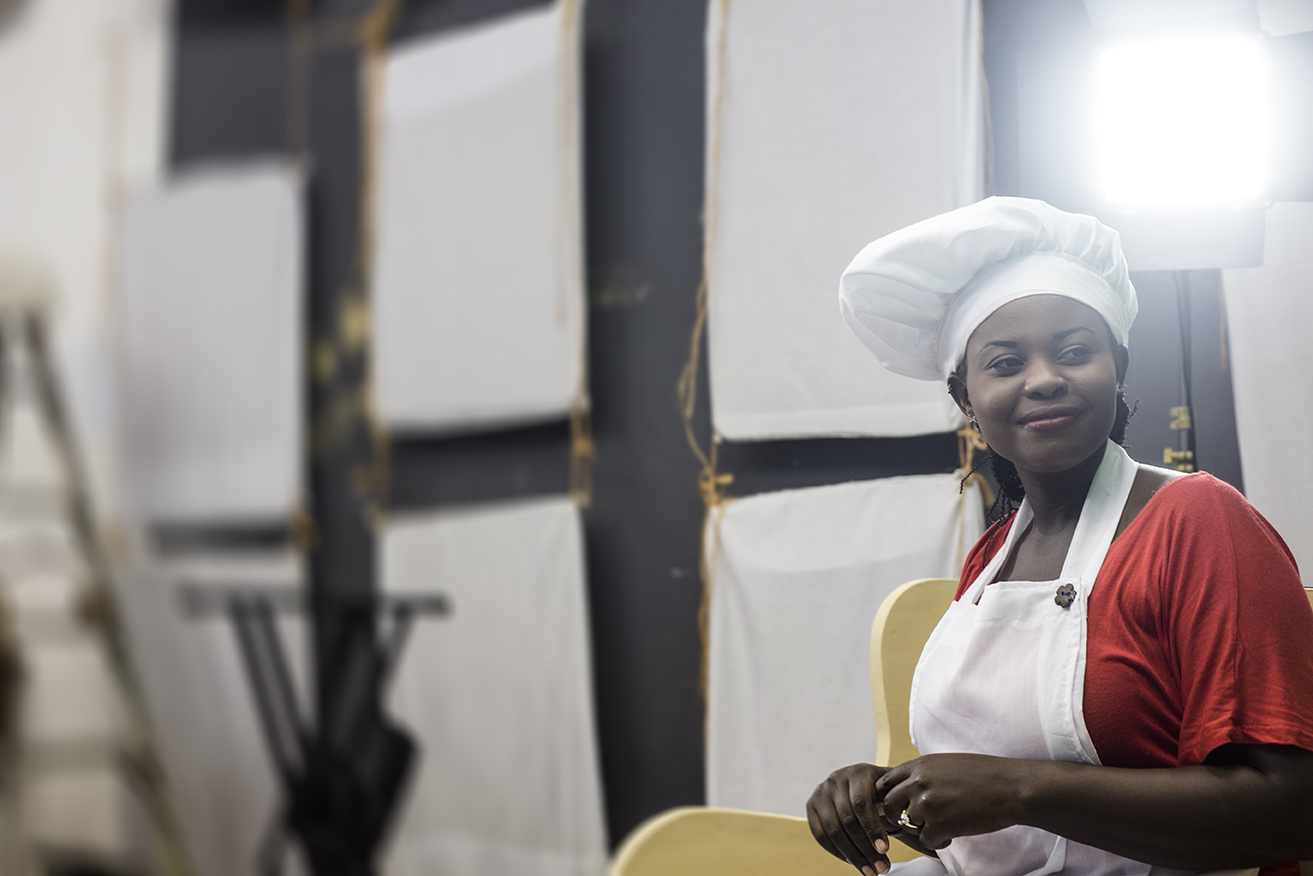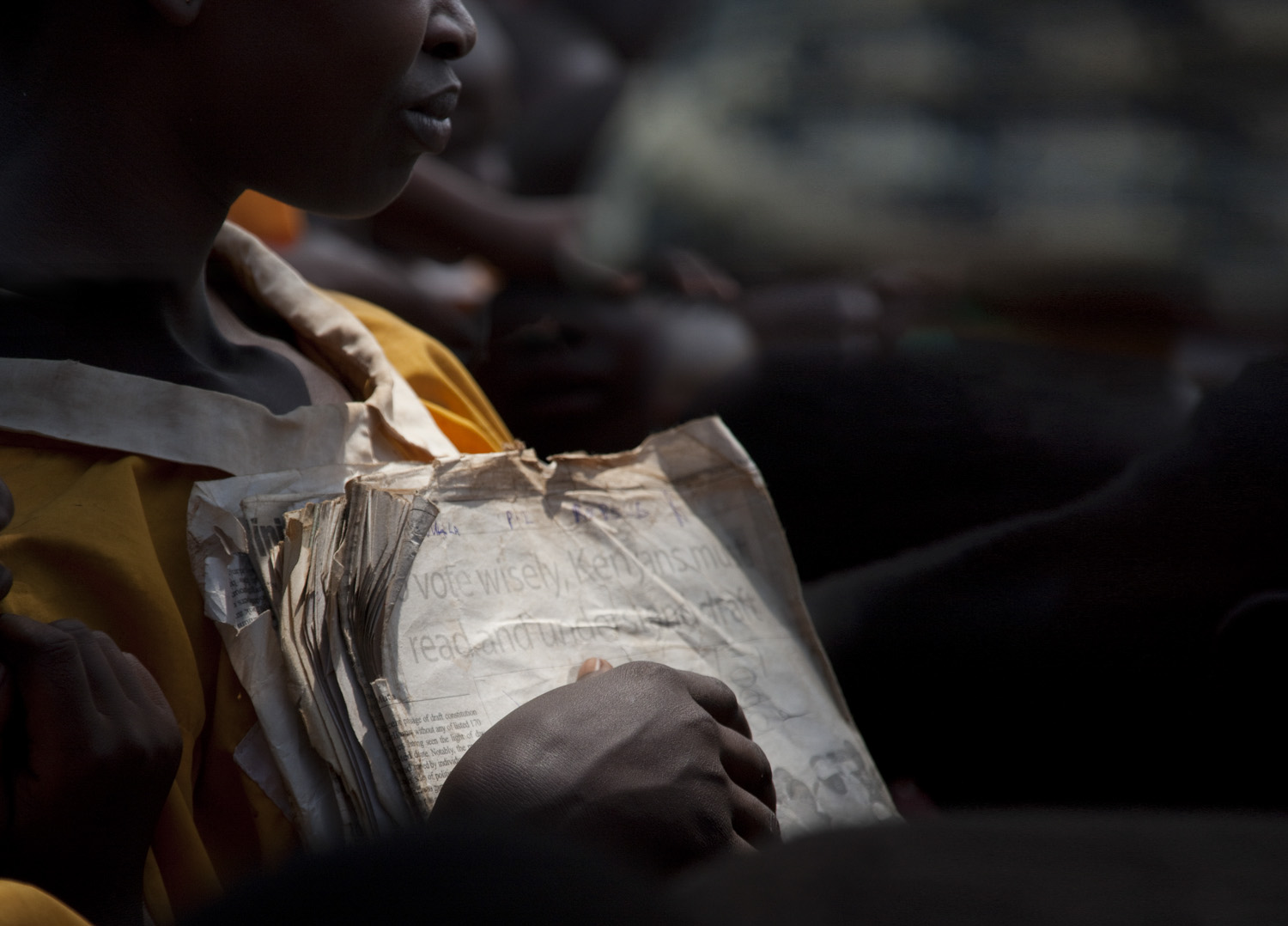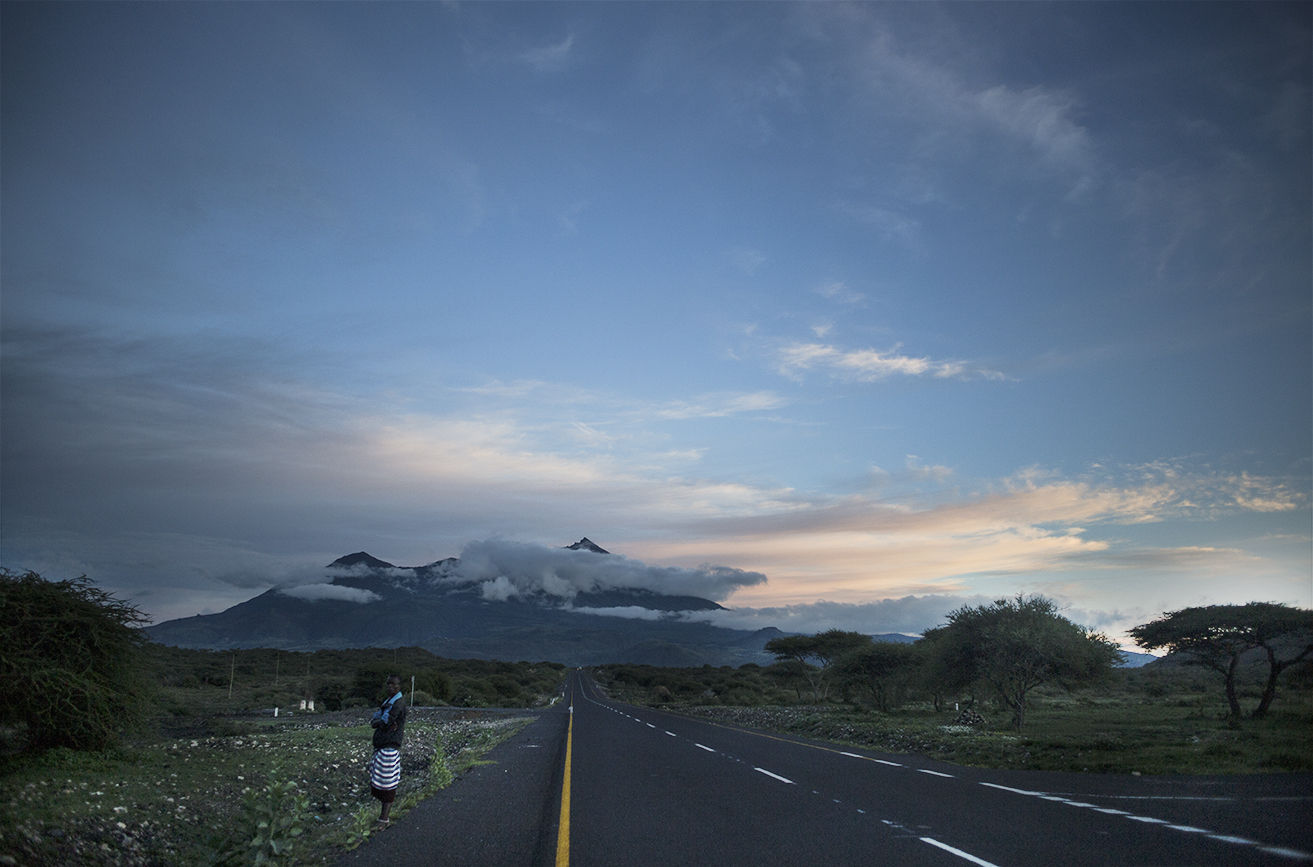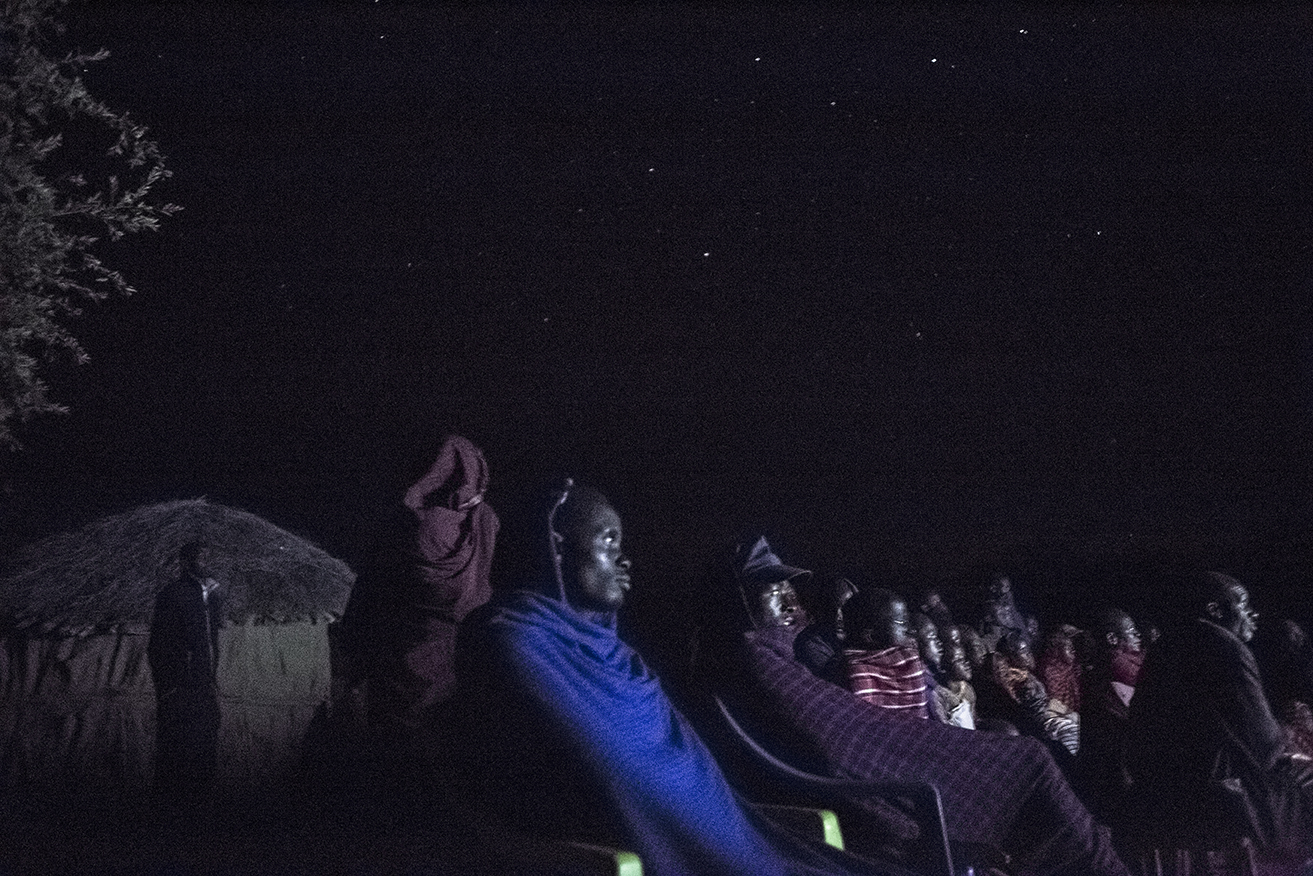Two months in Tanzania, a photographer's story
For the past two months I’ve been living near Arusha, Tanzania where I’ve been working for Pamoja Ministries on a television show called “Wewe Nami”.1 It’s a similar setup to Sesame Street, where we have a live host interacting with a puppet. I’m the camera operator and editor for the show, so I’ve had plenty of work to fill my days. We’ll be shooting for the next six months, and after that I’ll be editing through December, which will involve creating original music for the show, as well as making several animated sequences. As of this writing, we’ve finished shooting the first five out of twenty-six episodes, and I’ve cut together the first one.
Our five person crew has been making good progress, despite frequent noise interruptions from the neighborhood and from the weather. There is a workshop across the street from out studio that has a maize grinder they use pretty frequently, and people will bring in bags full of the stuff for them to grind up. It wasn’t much of a problem until the machine broke, and started making a loud whining sound whenever it was turned on. For about two weeks until it was repaired we spent a good chunk of time waiting for them to turn it off so we could shoot. We’ve heavily insulated the walls, and bricked over the windows, but our Achilles heel is our tin roof. Whenever it rains (which happens a lot now that we’re in the rainy season) the pounding of rain on metal reverberates through the whole building. So we wait.

The star of the show, Lucy, on set as her character “Shangazi”
I’ve spent some time in Africa before – in Uganda in 2008, and again in 2010 for about two weeks at a time, but spending nearly a year here is an entirely different creature. Uganda and Tanzania are similar in some ways, but there are a lot of differences between them, some more subtle than others. A major one is the incredible amount of peace and stability Tanzania has enjoyed in recent years. Especially in 2008 there was still a lot of evidence of the recent war in Uganda, and a palpable tension everywhere because of it. Even then, there was still a lot of violence in the Northern parts of the country. That tension is thankfully absent from Tanzania, though things are constantly in flux, and those feelings are probably just my changing perception of what is and is not a real threat. Recently Al-Shabbab (supposedly) issued a threat to Arusha, and the police sent out a text message alert with the details. Most people paid only the same vague attention to it that I paid to text message alerts from the Richmond police telling me about the latest armed robbery in my neighborhood. Turns out the threat was an empty one, and the same threat had been copy-pasted and sent to pretty much every major city in East Africa. Routine. Still, recent happenings in nearby Kenya and Burundi remind me to stay aware of what’s going on in this part of the continent, and to take things more seriously than I’m inclined to.
While a lot of things here feel familiar, everything is just as new as it was for me seven years ago when I first came to East Africa. I have a lot to learn and a lot to adjust to, so for now I’m drinking everything in, which means learning the language and generally trying to keep my feet out of my mouth. That can be a challenge when I have so many questions about how everything works. Some things are very much the same though – I still have a deep love for this place and the people who call it home.

Girl with newspaper, Uganda 2010
Unlike my previous visits to Africa, I’ve been setting aside my camera for the most part, or at least not carrying it with me wherever I go2. However, I was lucky enough to get a clear view of Kilimanjaro from my front yard a couple weeks ago. It’s usually hidden by clouds, but it came out for a little while and I managed to get a great “prismed” shot of it (top).
This past weekend, we went out to a Maasai village near the border with Kenya to show the Swahili musical “Nipe Jibu" which Kahawa Media3 released back in 2009. Most of the way we traveled along Tanzania’s main paved highway.4 Along the road we picked up someone from the village who knew how to find it, then we turned off the road and began to make our own road, heading in a Southwesterly direction away from Kilimanjaro, across dried river beds, over hills and sparsely wooded plains, and deep into land where the Maasai graze their cows and build their bomas.

Highway in the shadow of the mountain
We have a projector, screen, and audio system that we bring with us whenever we show the film. Usually we set them up indoors, but the weather was uncharacteristically clear for the rainy season, so we put together our own little starlight cinema. There’s nothing quite like watching a film outdoors on a cool summer night under a sweeping vista of stars and the Milky Way. One thing we didn’t anticipate was that most of the older adults couldn’t understand the film since it is in Swahili, and they only speak Maa5. Luckily for us (and for them too), in the tradition of the classic movie palaces, we run shorts before the feature. We happened to be showing a series of music videos by the En-Kata Choir, who are exceptionally talented. Those who weren’t so interested in the movie happened to love the music videos to the point that when “Nipe Jibu” finished, we put En-Kata back on again. So everything turned out alright.
 Maasai watching “Nipe Jibu” at our starlight cinema
Maasai watching “Nipe Jibu” at our starlight cinema
In June, I’ll be visiting for a few days with a group of Maasai who make up the En-Kata Choir. I had the pleasure of meeting them back in the U.S. a few months ago when they were on tour in the U.S. raising money to build a school, and they passed close enough to home that I was able to hang out with them for an evening. The folks I’m working with here at Pamoja have known them for years, and have released a lot of their music on Kahawa Records. I’ll have a lot more opportunities to pull out my camera there, as music and media are a large part of how they fundraise, and they’re always glad to have photographers around. Pamoja released a photo book a few years ago that chronicles their stories, as individuals within the tribe, and as the remarkable choir that they have formed. You can get it online, or you can pick one up if you come see them when they’re back on tour in the U.S. and Canada in 2017. I highly recommend seeing them if you can.
While I’m living here I’ll be posting as many images and stories on the website as I can, but more frequently, I can be found on Instagram and Twitter, where I’ll be putting up a lot of things like behind-the-scenes photos that won’t end up here.
- Stephen Wozny, global worker in Tanzania
- Swahili for “You ’n Me”.
- When I was exiting my teens, I had fewer reservations about pointing a camera at people without their permission. At the tail end of my twenties, I’m much more aware of the fact that when I’m in someone else’s home, I need to be respectful of that.
- Swahili for “coffee”. Interestingly, the word “kofi” means “slap” in Swahili. There’s a delightful TV ad here where someone asks for coffee and gets slapped in the face, prompting the slogan “don’t ask for coffee, ask for Africafé”.
- If you’ve watched Top Gear, you’ll be familiar with it. It’s a glorious road through stunning wide open country, in the shadow of Mt. Meru, and across a wide plain from Mt. Kilimanjaro. It’s ruined only by frequent and maddening speed humps.
- Maasai literally means “Maa speaking people”.